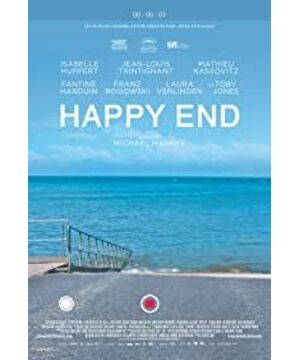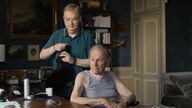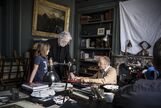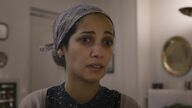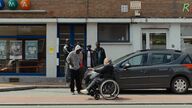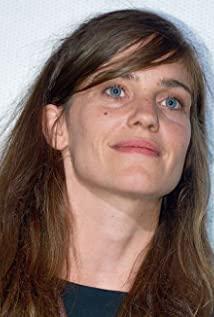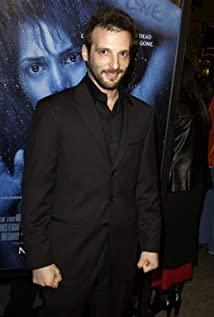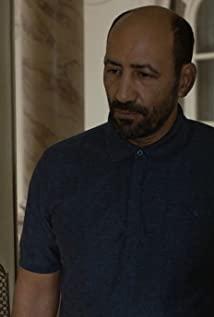Whether for the media, critics, or fans familiar with European cinema, Michael Haneke's new "Happy Ending" must be one of the most anticipated works of the year. After all, Haneke has previously won two Palme d’Or at the Cannes Film Festival within four years, jumping into the “Double Palme d’Or Club” and becoming one of the few “genuine” master directors since the new century. This time, although Haneke failed to win the Palme d'Or for the third time in Cannes, his works still maintained a high level. His cold, sharp and humorous video style won the audience bursts of laughter at the premiere With applause and applause, the serious problems of European society reflected in the story are also thought-provoking.
"Happy Ending" revolves around a fragmented upper-class family, whose family members are unfamiliar and indifferent, everyone is extremely tired of life, and every move reveals a morbid state that makes people think deeply. The head of the family, George Lauren (Jean-Louis Tradignan), can only sit in a wheelchair because of his lower body paralysis. His boring life makes him live without expectation and interest every day. Was rescued several times. His granddaughter, Eva Lauren (Fantine Hadwin), is also "unlovable" - first returning to the Lauren family and her divorced father after her mother's suicide, and then discovering that she has remarried but is still The lewd words left by the insatiable father to his lover on social platforms. Eva, who had three views collapsed but was completely helpless, completely lost confidence in her family, family and life, and also went to the road of suicide, but like his grandfather, fate could not let her escape easily.
Meanwhile, George's daughter Anne Lauren (Isabel Huppert) and his son Pierre Lauren (Franz Rogowski) are no better off: the former needs Dealing with the sudden dilemma faced by the family business, on the other hand, having to deal with a worrying father and other trivial matters, his experience is simply the French version of "women forty"; the latter is completely outside the family and cares about his mother Indifferent, he neither wants to take on any family responsibilities, nor is he interested in the life of the upper class. He idles around all day and mingles in the lower-level community. He likes to talk nonsense in public places such as large gatherings for fun. In the second half of the film, Pierre even invited a group of black refugees to his birthday luncheon for George Lauren, detailing their nationalities and experiences one by one, embarrassing everyone present. The unbearable Annie Lauren finally had to take a rather extreme method: twisting Pierre's little finger (instantly reminiscent of the ruthless heroine Erica in "The Piano Teacher"), let him Abandoned this farce show.
Overall, the film does not have a coherent, complete story, nor does it explain the motives of any of the characters; it just connects and collages the lives and communication states of family members, from medium to long-term perspectives. The camera calmly observes the actions of all the characters; in some cases, the film even hides the content of the dialogue, leaving only a dialogue or conflict scene, trying to capture the alienated, indifferent and ambiguous family and scenes from an extremely objective perspective. Street snapshot.
In addition, "Happy Ending" is also interspersed with surveillance images (similar to the previous work "Hidden Camera", but "Hidden" uses movie footage to imitate surveillance, while "Quick" is real surveillance), social web chat Interface, Youtube video and mobile phone live APP interface, the use of these elements reflects Haneke's high sensitivity to new media and the film's metamorphosis. Their appearance not only symbolizes the continuous development and evolution of the media, but also It re-discussed the ever-increasing status and role of new media in image expression, and more closely connected the audience with the photographer. For the director, these images were originally just recording and peeping, but then, the function of the images began to evolve, and peeping gradually became entertainment, until the appearance of live broadcasts on mobile phones and the appearance of barrages on the interface, the audience was separated from the plot and began to disagree. Images and their narratives are judged and considered, and this is what Haneke’s entire film aims to do.
At the end of the film, after witnessing the farce created by Pierre, George Lauren quietly left the family lunch specially organized for him, and asked Eva to push herself and her wheelchair into the sea in an attempt to commit suicide again. Eva didn't refuse; she just threw him into the sea and watched George's body submerge, without asking for help from her father and other adults. Not only that, she unexpectedly took out her mobile phone, clicked on the video, and hunted this gripping death moment as a bystander. Fortunately, the suicide attempt appears to have failed again (off-screen, we can't know for sure): Anne Lauren runs out of the ballroom, gives Eva a hard look, and hurries to the beach. rush away. Everyone's panic and panic were recorded in detail by the mobile phone; although the recorder himself has been hidden behind the mobile phone, his indifference to family, others, life, and the absurdity of using the lives of relatives as entertainment are also indirectly preserved in the in the video.
Judging from his previous works, Haneke often establishes a hidden causal connection between the storyline and the background of the film, hoping to dig out the deeper and more microscopic background behind major events and situations through this method. The reason (for example, "The White Ribbon" uses the repressive and morbid family atmosphere to explain the background of the First World War and the emergence of Nazism). "Happy Ending" is no exception. Its plot is set in a specific time and space range, that is, within Calais in northern France, which is the location of France's famous "Jungle" refugee camp. In 2002, French President Nicolas Sarkozy ordered the closure of the Sangat refugee camp and the reconstruction of the Calais "Jungle" refugee camp in situ. A large number of refugees gather here, waiting for the opportunity to cross the English Channel and enter the UK illegally. As of October 26, 2016, the "Jungle" refugee camp in Calais, France was ordered to be officially dismantled, and as many as 6,500 refugees from Afghanistan, Kosovo, Sudan and other African and Middle Eastern regions will be expelled.
Perhaps Haneke wanted to use this film to show that the microscopic upper-class life is no different from the attitude of France towards refugees. The two types of alienation and indifference are not only the same, but also have a definite causal relationship. Or, there is an irony hidden in it: how can individuals and nations who don't even care about their own lives expect them to do any humanitarian action? From this perspective, "Happy Ending" can even be regarded as a refugee movie, but it is undoubtedly a different approach. It is this kind of alternative approach that has made Haneke's work more pertinent, more penetrating, and more moving.
Haneke is anxious, and this anxiety leads to a cold style, but also to caring and warmth. To be fair, "Happy Ending" doesn't allow Haneke to outdo him, all the elements that appear in the film, all the topics discussed are covered in its previous films; loose narrative, slightly redundant characters The setup and experimental media handling also played a role in the look and feel of the film. As a result, "Happy Ending" can't help but give people the feeling of "fried cold rice".
But fortunately, Haneke has remained the same. When we sit in the theater and face the above, we will clearly feel that his understanding of human nature and the advanced exploration of the media are still awe-inspiring, and people's re-examination and discovery of "Happy Ending", It's just a matter of time.
View more about Happy End reviews


